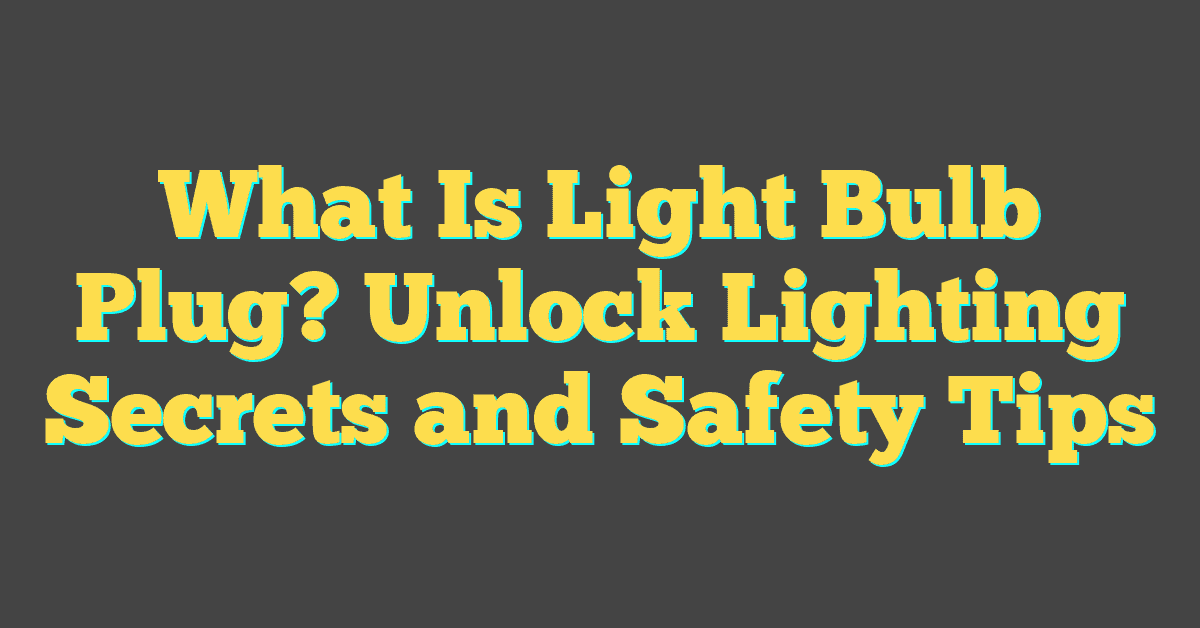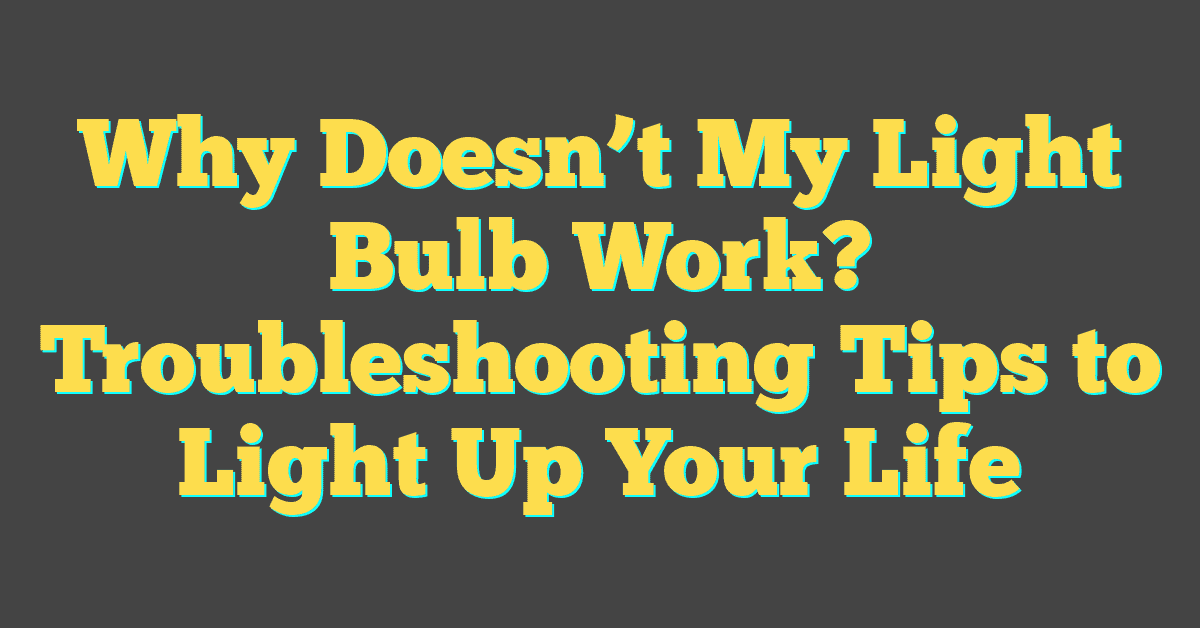Ever walked into a room and felt instantly cozy? Chances are, it’s all thanks to the warm glow of yellow light bulbs. They’re not just any bulbs; they’re the unsung heroes that make your home feel like a snug retreat.
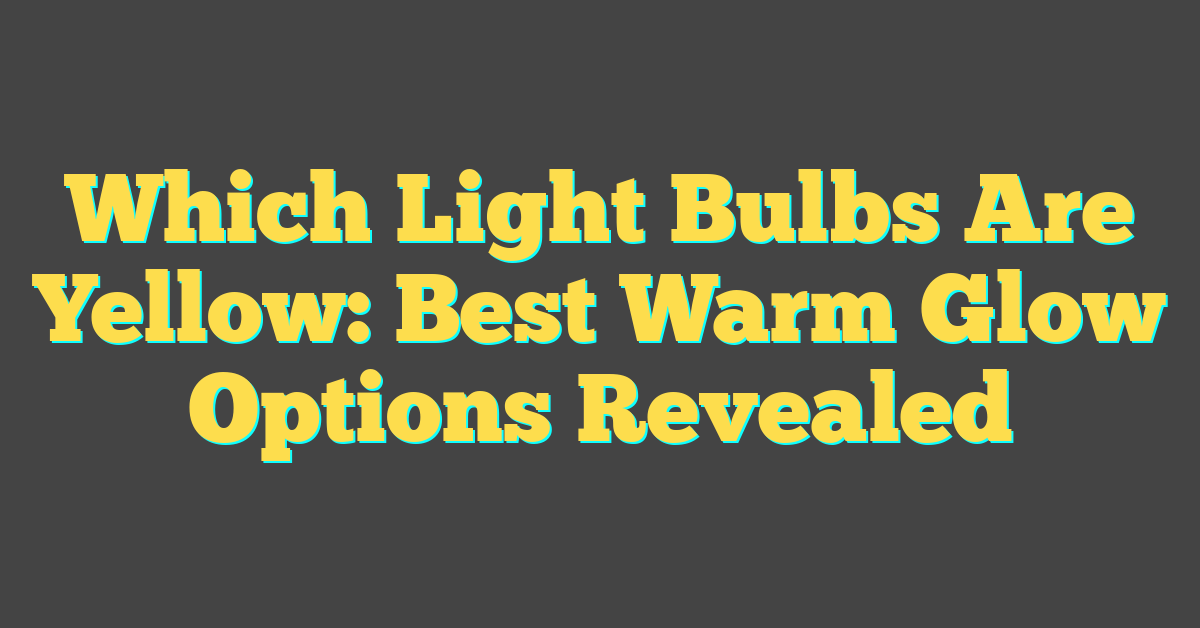
But with so many options out there, you might wonder which light bulbs give off that inviting yellow hue. You’re about to find out exactly which bulbs to pick to bathe your space in golden light.
What Makes Yellow Light Bulbs Special?
Yellow light bulbs aren’t your average lighting choice. They’re a design statement, a mood enhancer, and a practical lighting solution all rolled into one. Here’s why they’re so unique:
Warmth: Yellow bulbs emit a warm glow that’s not just visually pleasing but also psychologically comforting. This is why you’ll often find them in living rooms and bedrooms, places where comfort is paramount.
Versatility: These bulbs come in various shapes and sizes, from the classic Edison to contemporary LED options. Whether you’re going for vintage charm or modern efficiency, there’s a yellow bulb that fits your aesthetic.
Soft on the Eyes: Unlike the harsh, bright white light from some bulbs, yellow light is gentle on your eyes. This makes it ideal for areas where you spend a lot of time reading or relaxing. It reduces eye strain and adds a cozy, welcoming ambiance.
Color Rendering: Yellow lights have a particular knack for creating rich, warm tones that enhance wood grains and earthy colors. That’s why they’re the go-to choice for spaces with lots of natural materials.
When choosing the right yellow bulb for your space, consider the following:
- Brightness: Always check the lumens. More lumens mean more light, irrespective of color.
- Hue: Look at the color temperature. Measured in Kelvins, a lower number indicates a yellower light.
- Efficiency: Opt for LEDs if you care about energy consumption. They’re more energy-efficient and have a longer lifespan than traditional incandescent bulbs.
Remember, the key to making the most of yellow light bulbs is finding the right balance. Test different bulbs in your space to see how they interact with your decor, and don’t be afraid to mix and match different types to create layers of light. With the right approach, you’ll be able to elevate the coziness of your space to new heights.
The Different Types of Yellow Light Bulbs
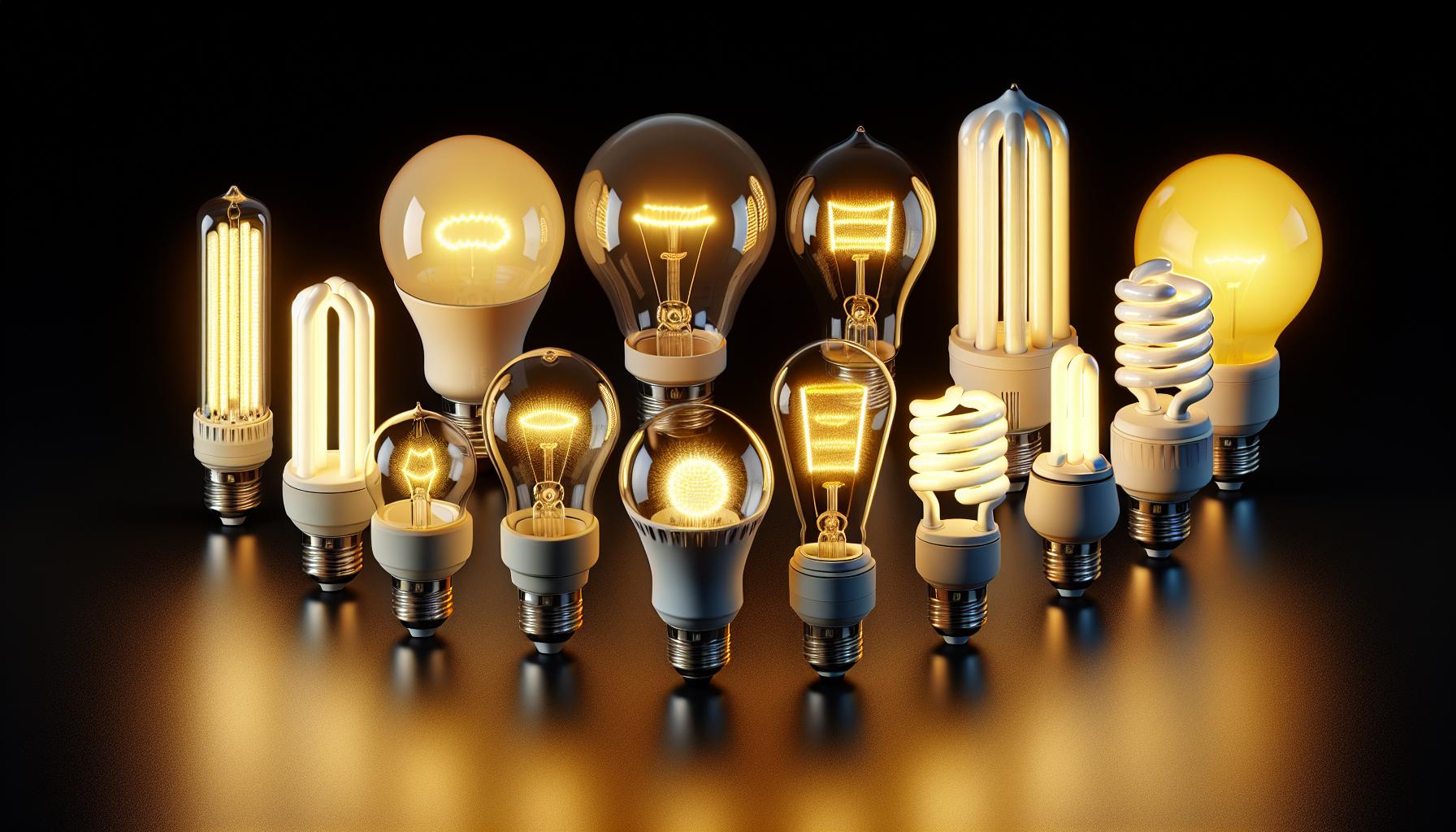
When you’re on the hunt for the perfect yellow light bulb, you’ll quickly discover there’s a variety to choose from. Each type has its characteristics and ideal uses, ensuring that you can find just the right glow for your space.
Incandescent bulbs are the traditional choice and they naturally emit a warmer, yellowish hue. They’re typically less expensive upfront but don’t let that be your only guide. Their lifespan is shorter and they’re not as energy-efficient as other options.
Halogen bulbs produce a light that’s somewhat similar to natural daylight but with a touch of yellow, especially when dimmed. They’re more energy-efficient compared to incandescent bulbs and also provide a higher color rendering index (CRI), which means colors look more vibrant under their light.
For those of you keen on energy savings, LED bulbs are the way to go. While they come in various colors, warm yellow LED bulbs are available and are incredibly energy efficient. Their long lifespan can make the higher initial cost worth it over time.
Next, consider compact fluorescent lamps (CFLs). These bulbs can emit a warm yellow light and are more energy-efficient than incandescent bulbs. However, they take a moment to warm up to their full brightness and color.
« Are Red Light Bulbs Good For You? Discover Sleep-Enhancing Benefits
Do Light Bulbs Expire if Not Used? Maximize Bulb Lifespan With These Tips »
Below is a quick comparison of these types in terms of average lifespan and energy efficiency:
| Type of Bulb | Average Lifespan | Energy Efficiency |
|---|---|---|
| Incandescent | 1,000 hours | Low |
| Halogen | 2,000 hours | Moderate |
| LED | 25,000 hours | High |
| CFL | 10,000 hours | Moderate-High |
Don’t forget to look at the color temperature measured in Kelvin (K). The lower the number, the more yellow the light. A color temperature of 2700K to 3000K typically gives off a soft yellow glow, perfect for creating that cozy, inviting atmosphere you love. It’s key to find the right bulb that balances brightness and hue to achieve the desired warmth in your space. Try out different bulbs in various rooms to see what works best for you—the effect can vary depending on room size, wall color, and natural light.
Incandescent Bulbs: The Original Yellow Light
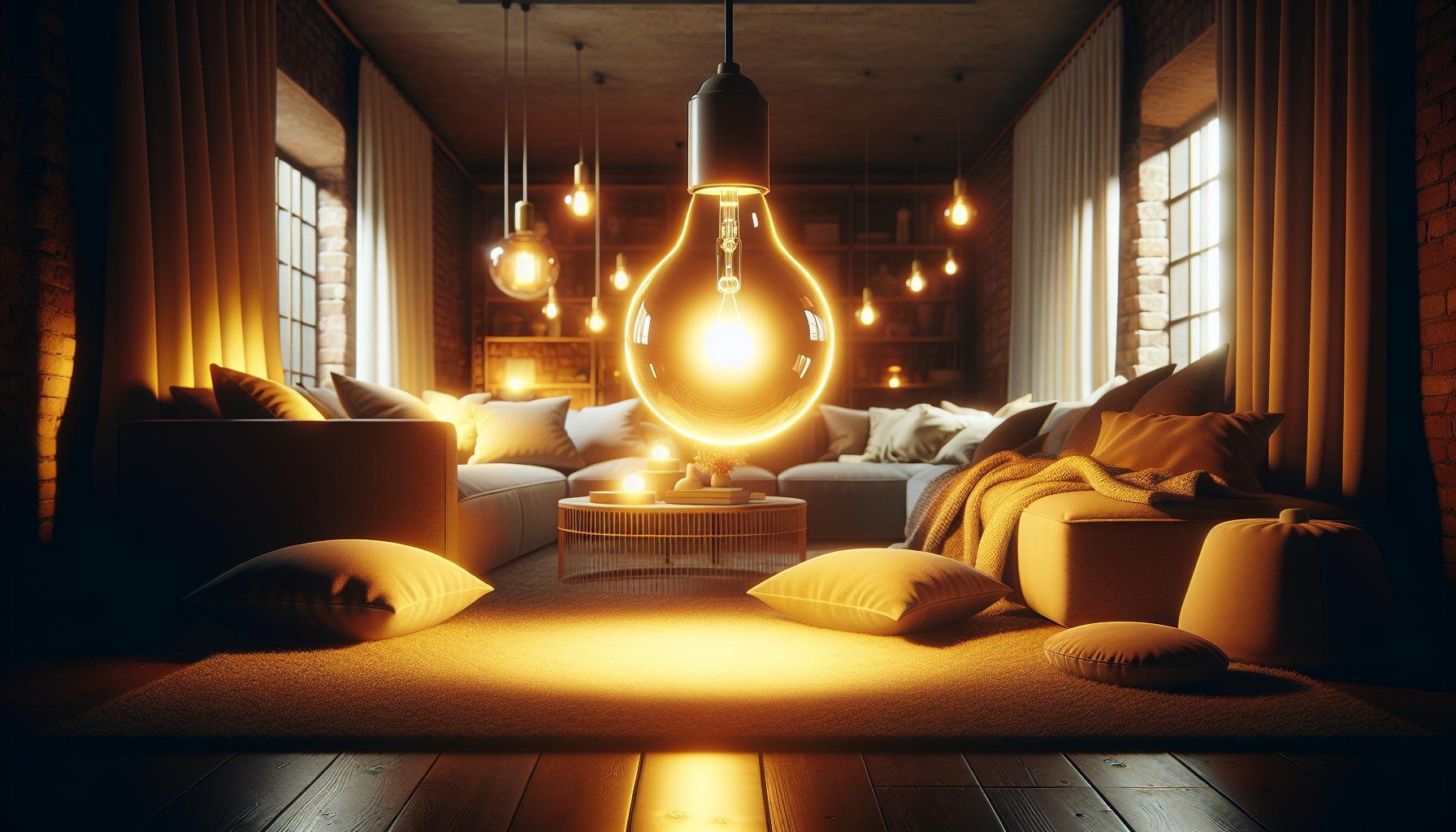
When you delve into the world of lighting, you’ll find that incandescent bulbs are often dubbed as the quintessential source of that coveted warm, yellow light. Their distinct glow, reminiscent of a calm evening by the fireside, has lit up homes for over a century. But what gives these bulbs their charming yellow hue?
Incandescent bulbs produce light by heating a wire filament to a high temperature until it glows. The filament, usually made of tungsten, radiates a spectrum of light that leans heavily into the yellow and orange range, casting a warm ambiance that’s perfect for cozy settings. This traditional method of light production accounts for the inherently yellow tint that is so characteristic of these bulbs.
As a DIY enthusiast, you might appreciate the simplicity of incandescents. They screw into standard sockets and illuminate without delay, providing instant atmosphere to a room. It’s important to note that while their immediate and predictable light output is a plus, incandescents are not champions of efficiency. They convert less than 10% of the energy they use into visible light, with the rest given off as heat. This inefficiency is a trade-off for their inviting glow.
Let’s look at some key numbers:
| Bulb Type | Average Lifespan (Hours) | Energy Efficiency (Lumens/Watt) |
|---|---|---|
| Incandescent | 750 – 2,000 | 10 – 17 |
Despite their lower lifespan and efficiency, incandescent bulbs remain a favorite for those seeking a touch of nostalgia and warmth in their lighting. It’s this balance of brightness and hue, without the harshness of cooler white lights, that keeps them popular in living spaces where the quality of light contributes significantly to the ambiance. Whether you’re setting up for a dinner party or curling up with a good book, these bulbs create an inviting atmosphere that’s hard to replicate with other light sources.
Halogen Bulbs: A Modern Twist on Yellow Light
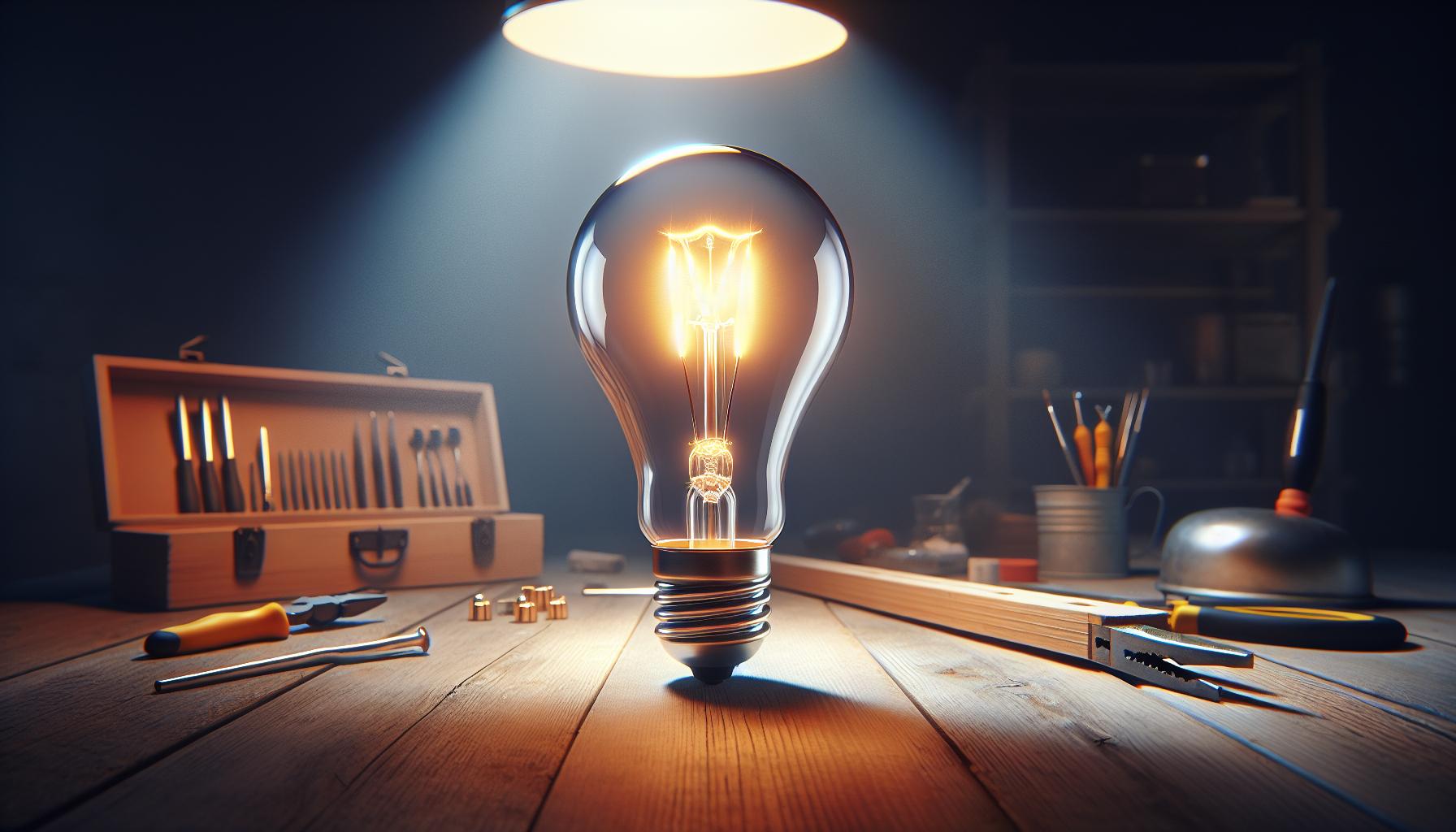
As you reminisce about the warm glow of incandescent bulbs, it’s time to shine a light on their close cousin: halogen bulbs. These bulbs are the evolution of incandescence, offering a similar spectrum of light with a few modern upgrades. Halogen bulbs are perfect for those of you who love to dabble in home DIY projects and have an eye for lighting nuances.
Halogen bulbs function much like their incandescent forebears with a filament encased in a compact envelope. However, they contain a small amount of halogen gas, which sets them apart. This gas reacts with the filament to create a regenerative cycle that prolongs the bulb’s lifespan and maintains its brightness.
What’s intriguing for any lighting enthusiast is the color temperature. Halogens produce light in warm tones, but they tend to have a slightly more crisp white quality compared to the characteristic yellow of incandescents. This is ideal for areas where you require good illumination without sacrificing coziness.
These bulbs also feature improved efficiency. While they may not reach the heights of LEDs or CFLs, halogens are definitely a step up from traditional bulbs. You’ll appreciate the reduction in energy consumption, especially if you’re in the process of optimizing your home’s energy usage.
If you’re someone who appreciates attention to detail, you’ll find halogen lights to be especially useful when focusing on tasks that require accurate color rendering, like painting or crafting. They’re also dimmable, which means you can adjust the ambience of your space with ease.
Next time you’re perusing the light bulb aisle, consider these factors:
- Halogen bulbs provide a balance between efficiency and color warmth.
- They have longer lifespans than incandescents, reducing the frequency of bulb changes.
- The white-yellow light is conducive to both relaxation and concentration.
Remember, lighting is not just about practicality; it’s also about setting the right mood, and halogens can do just that without forgoing modern lighting advances. Whether you’re reading a book or meticulously working on your latest DIY project, halogen bulbs will cast your endeavors in the best possible light.
LED Bulbs: Energy-Efficient and Yellow
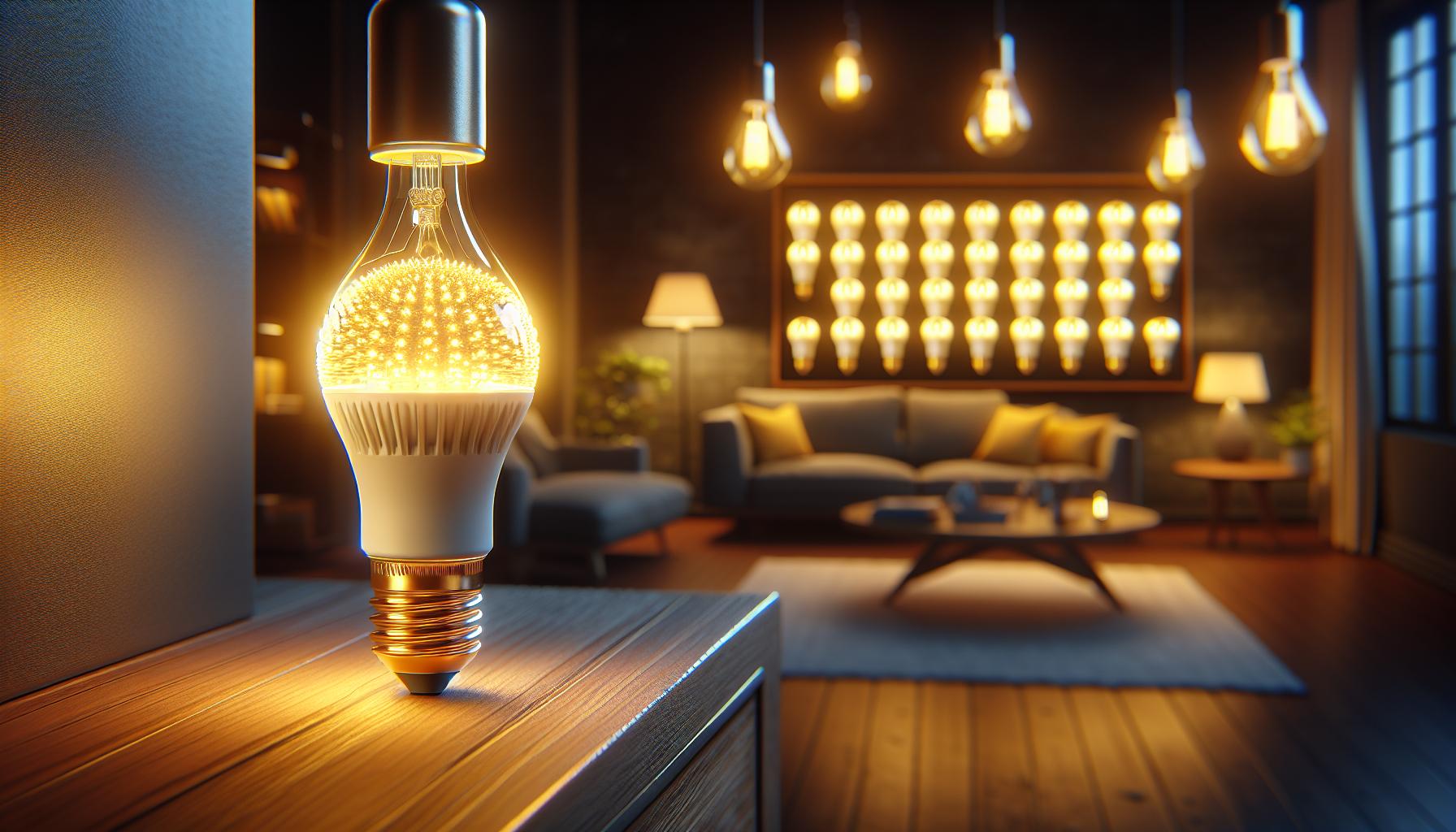
LED bulbs, short for Light Emitting Diodes, have revolutionized home lighting. They’re famous for their energy efficiency and longevity, but did you know that LED bulbs can also shine in the warm yellow spectrum? That’s right; you can enjoy the same cozy yellow glow you love with drastically lower energy usage.
Unlike incandescents, LED bulbs don’t rely on a filament. Instead, they use a semiconductor to convert electricity directly into light, and this technology allows for incredible flexibility, including the ability to produce a range of colors. When it comes to that inviting yellow hue, it’s all about the color temperature. Measured in Kelvin, LED bulbs typically range from 2200K to 6500K. For that traditional yellowish color, you’ll want to look for LEDs marked within the 2200K to 3000K range.
Color Rendering Index (CRI) is another pivotal factor. Essentially, CRI measures a light source’s ability to reveal the actual color of objects compared to a natural light source like the sun. You’ll want LED bulbs with a CRI of 80 or above for the most vivid and natural hues, ensuring that your home feels as naturally lit as possible.
Beyond color, LEDs offer remarkable benefits:
- Reduced electricity bills due to high efficiency
- Less frequent bulb replacements with lifespans up to 25 times that of incandescent bulbs
- Minimal heat emission, making them cool to the touch and safer for enclosed fixtures
When it comes to warmth and ambiance, you’re not limited to the dim glow that often comes with energy saving. Modern LED bulbs are designed with dimmable features so you can still dial in that perfect level of cozy-low for a relaxing evening or brighten up when needed.
Whether it’s for your reading nook, home office, or winding down in the living room, now you know: there’s an LED bulb to match your need for both a splash of yellow and energy efficiency. Swap out those old bulbs and see how you can enhance your space with the right LED lighting.
Conclusion
You’ve explored the ins and outs of finding that perfect yellow glow for your space. Remember, LED bulbs are not only energy savers but also champions of longevity and cozy ambiance. With the right color temperature and CRI, you’ll nail that warm, inviting atmosphere you’re after. Plus, the dimming feature lets you tweak the brightness to suit your mood. So go ahead, make the switch to LEDs and bask in the golden warmth that transforms your environment. Happy lighting!
Frequently Asked Questions
What are the benefits of LED bulbs?
LED bulbs offer several benefits including energy efficiency, longer lifespans, reduced electricity bills, and minimal heat emission. They are also dimmable for customizable lighting.
Can LED bulbs produce a warm yellow glow?
Yes, LED bulbs can produce a warm yellow glow. The color temperature and Color Rendering Index (CRI) of the LED bulb will determine how warm and yellow the light will appear.
What should I consider when choosing LED bulbs for a cozy atmosphere?
When choosing LED bulbs for a cozy atmosphere, consider the color temperature and the Color Rendering Index (CRI) to ensure the light is warm and pleasant. Look for bulbs with a low color temperature (around 2700K) and a high CRI for better color accuracy.
Are LED bulbs cost-effective?
Yes, LED bulbs are cost-effective due to their energy efficiency and long lifespan. They consume less electricity and need to be replaced less often than traditional bulbs, which can save money over time.
Is it possible to adjust the brightness of LED bulbs?
Many LED bulbs are dimmable, which means you can adjust their brightness to your preference. However, make sure to check the product specifications to ensure the LED bulb you choose has dimmable capabilities.

